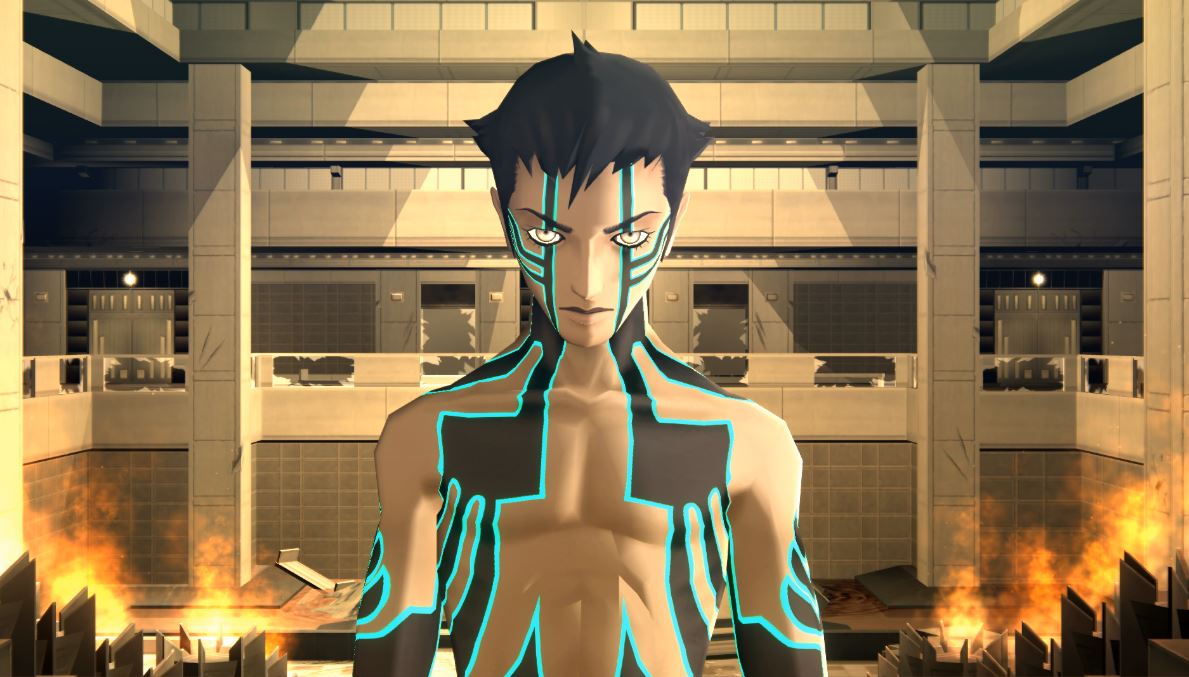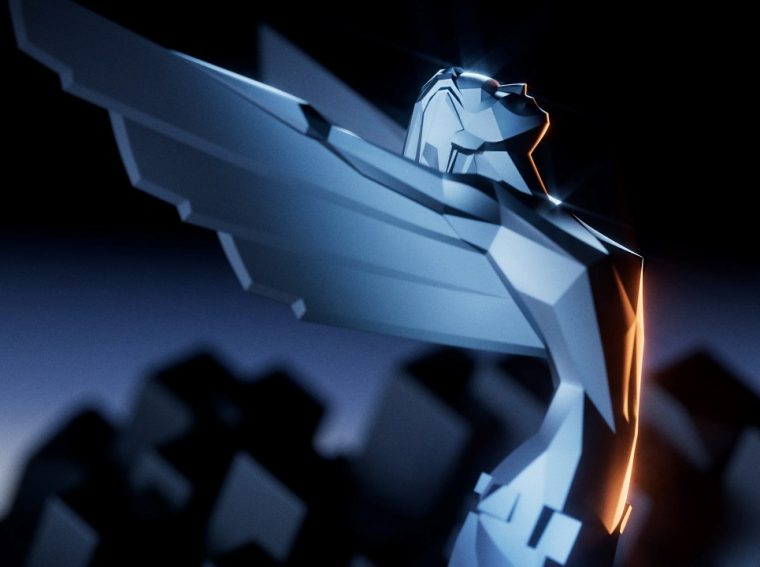Kunitsu-Gami: Path of the Goddess Review
Kunitsu-Gami: Path of the Goddess Review
Table of Contents
Kunitsu-Gami: Path of the Goddess is the newest action strategy title from Capcom, and just like Exoprimal last year, the Japanese developer has been creating new IP that challenges conventional gameplay mechanics to varying levels of success. While the third-person dinosaur shooter wasn’t quite the Dino Crisis successor most thought it was, Kunitsu-Gami posed itself as a tougher nut to crack because of its strategy-oriented gameplay that was far from the usual.
Kunitsu-Gami has a simple premise: humanity’s greed has led the goddess to corrupt the deities of Mt. Kafuku, transforming them into monstrous beings known as the Seethe. The priestess Yoshiro and her protector Soh narrowly escape the initial onslaught and must now gather the remaining Masks to restore balance to the region.
Will you be able to complete such a herculean task? Strap that sword and wear that mask, protector, and we shall follow the Path of the Goddess!
Dance to the Tune of the Goddess
Kunitsu-Gami is a game that’s not easily explained, and even with some gameplay bits shown, questions still lingered. How much of it was an action game, and how much of the tower defense strategy would be integrated? Despite the initial confusion, the unique visuals reminiscent of Okami make quite the first impression.
The game gradually introduces its main elements, prioritizing action initially. You control Soh, who embodies the action aspect of the game, allowing you to run, jump, attack, and defend with fluid and responsive combat mechanics typical of Capcom’s action games.
However, the Seethe attack in overwhelming numbers. With only one character to fully control, the game ends abruptly if the priestess Yoshiro is incapacitated. Just like in a tower defense game, the true strength of the player will be found in its units, villagers turned warriors who will help defend Yoshiro at all costs.
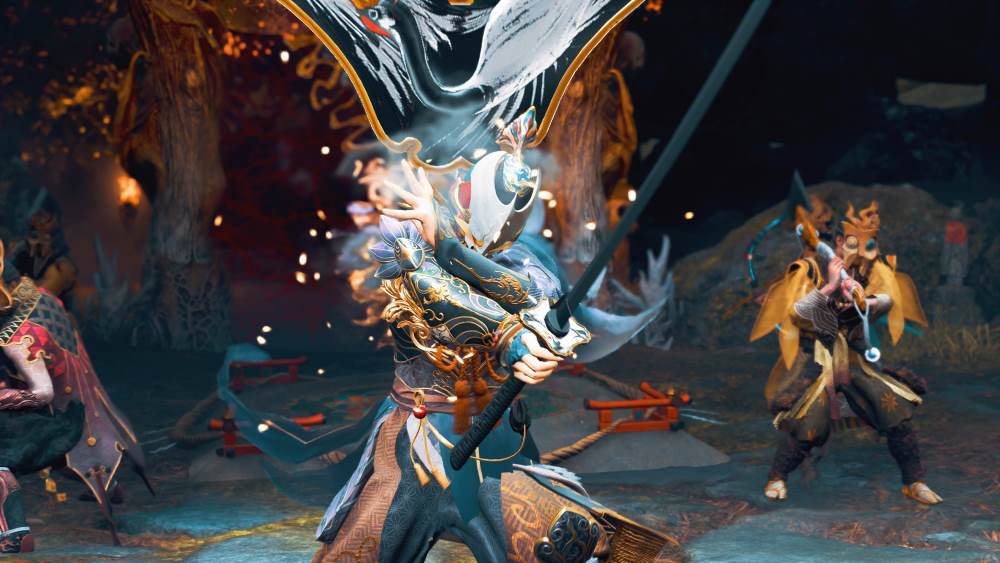
Each area in Kunitsu-Gami follows a two-fold loop: Purification of a Town and Defeating the Guardian Seethe. Each town has its own villagers, unique Spirit Gate, and Seethe to contend with, all while leading Yoshiro down her path as she purifies all things in her wake.
Levels alternate between day and night. During the day, you prepare your forces, plan Yoshiro’s path, and explore the town. You’ll start freeing captive villagers as you transform them into capable units of your choosing, starting out with your basic melee woodcutters and your ranged archers, all employed to protect the priestess. As you progress in Kunitsu-Gami, collecting Masks enables you to transform villagers into formidable fighters, skilled craftsmen, or powerful sorcerers, each with varying abilities.
At night, all preparation ceases, and your primary goal is to halt the Seethe’s advance until daytime. During this phase, you’ll be moving around your troops to find a sufficient defensive placement that will keep the Seethe away from Yoshiro, covering your tracks lest the advancing forces overwhelm you just like a tower defense wave. This cycle continues until Yoshiro purifies all the Spirit Gates or falls to a Seethe attack.
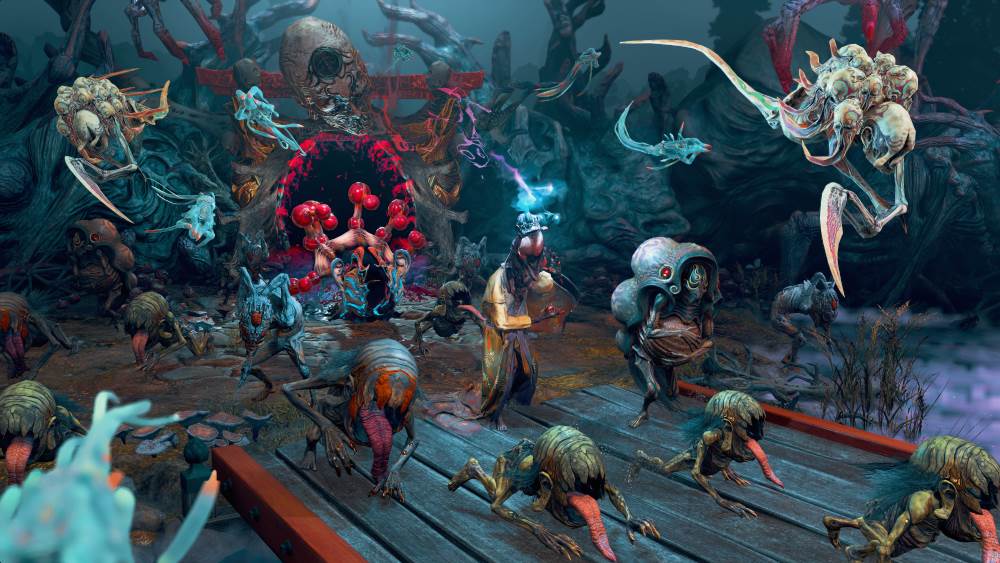
After completing the purification, you can return to the town to repair it and earn rewards. These repairs are completed over time as you progress through stages, and upon completion, you are rewarded with Musubi, Trinkets, Ema Plates, or Sweets. Musubi enhances your units’ status by leveling them up, Trinkets can be equipped by Soh as Talismans for passive rewards or Tsuba Blade Guards for special moves, and Ema Plates and Sweets provide enjoyable codex entries to explore during downtime.
A significant portion of Kunitsu-Gami’s gameplay revolves around combat against the Seethe, creating a majestic dance of death involving Soh, the villagers, and the Seethe hordes. Soh’s combat mechanics are straightforward, featuring a sword combo that culminates with a dance button press. Depending on your inputs, Soh can execute an anti-air attack, a basic dance strike, or a powerful dance motion to clear weak Seethe.
Villagers play a crucial role in attacking the Seethe or defending Yoshiro, with Soh acting as the combat commander. Using the command button, you can position your troops strategically or micromanage their actions. Villagers can be assigned roles (Woodcutter, Archer, etc) at the cost of crystals, which are earned by defeating Seethe or through exploration.
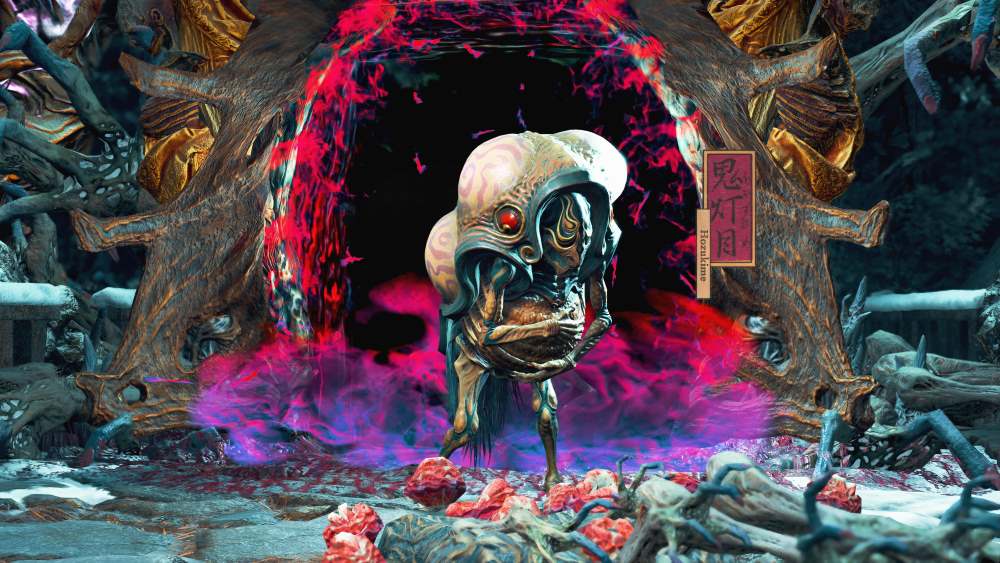
There’s quite a bit of item management that you have to do as well. Crystals are used to change villagers’ roles, and switching strategies will incur a cost as you figure out the best units to use in each level.
The Seethe will actively oppose Yoshiro’s purification efforts, requiring varied strategies to defeat different enemy units, including melee, ranged, and aerial Seethe. As you unlock new units, the Seethe also expands their numbers and tactics, increasing the challenge. It’ll keep you on your toes to adjust your strategy as you see fit.
The Path to Enlightenment is Difficult
Kunitsu-Gami starts by giving players a few levels to find their footing, with early stages offering the freedom to choose their approach. As Yoshiro’s journey progresses, the pace quickens, and by the third level, the game opens up, providing more options for exploration, purification, and boss battles, while also increasing the challenge.
Initially, defeating the Guarding Seethe is straightforward, but as levels become more complex, the town’s theme becomes integral to your strategy. For instance, in the Yuan Caverns at the third level, players must light lanterns to help their troops see incoming Seethe. The boss battle in this level requires lighting all the lamps to reveal the Guardian Seethe’s weak points.
Certain levels also allow interaction with the environment through characters. Carpenters can build and repair barriers to hold Seethe at bay and construct offensive structures like archer towers and shrines to boost unit offense. Unlocking the Thief class, at the cost of one villager, facilitates item procurement, allowing players to focus on troop placement and area exploration.

The difficulty curve of Kunitsu-Gami is appreciated for being challenging without becoming overly difficult. There is no difficulty toggle, so players must master the fundamentals. This is, at its core, a form of tower defense game, so understanding how waves work and upgrading your troops is an integral part of the experience. By the halfway mark, the game shifts significantly as players gain the ability to customize Soh thoroughly.
When Soh’s full capabilities are unlocked, it now becomes a question of how you customize your game style. Will you be the wise commander who sits back and gives command to your troops while you protect Yoshiro? Or will you be the active strong leader who leads by example and leaves your troops for defense? Or are you the talented leader who can thwart your enemies while micromanaging your troops? The choice is up to you.
Kunitsu-Gami’s customization options allow players to build their strategy around their preferred playstyle. Players can equip specific trinkets to support their chosen strategy, unlock both melee and ranged attacks for Soh, and issue specific commands to troops, using hard-earned Musubi to empower them so that they can stand their ground on their own.

Apart from guiding Yoshiro throughout her journey, rebuilding purified villages is also an addictive mechanic of Kunitsu-Gami. The more you expand your village, the more you’re rewarded with extra crystals, rations for healing, extra equipment, and the extra codex and art pieces really opens up the world. Levels are repeatable with optional challenges to allow you to complete your town projects, allowing you to unlock more Musubi and Trinkets to grow stronger for the next round.
The Tower Defense aspect of Kunitsu-Gami is particularly engaging, with Yoshiro acting as a moving tower. Your strategy hinges on her positioning, and the objective is to defend her while planning her movements in relation to the terrain. Initially simple, the game progressively challenges you with creative Seethe attacks that test your strategies.
By the endgame, the complexity increases as more troop classes are established and Seethe units become more formidable. Previously defeated bosses return in greater numbers, testing your ability to adapt your strategy to the invading forces. The diverse unit types and strategic positioning are well-designed, providing a satisfying challenge. Defeats are not frustrating, as there are always solutions to the puzzles, showcasing the developers’ thoughtful design.

In Defense of the Steam Deck
Playing Kunitsu-Gami on the Steam Deck is certainly doable, but there will be some concessions. On the PS5, the visuals are clean and sharp, and colors pop out, and while the colors also shine in the Steam Deck because of how brilliant the OLED screen is, the visuals are noticeably muddy but not enough to detract from the overall experience.
We tried the game out on the OLED Steam Deck with the following settings:
- 40 fps limit
- TDP at 10
- FSR sharpness at 2
With these settings, our battery life lasted around 2.5-3 hours on a full charge, but the Steam Deck also became noticeably hot and the fans were working overtime during busier sections of the game. There are some display settings that can be toggled in the game to further reduce the image quality so that the device won’t exert itself too much, allowing for flexibility when playing the game on the go.
That said, Kunitsu-Gami is certainly a game that’s fit for portable play, as none of its actions are too complicated for handheld/non-controller play, and scaling down to a smaller screen isn’t a problem despite the art style as all of the elements are still visible and readable. Frame rates stuck to 40 for the most part, but would slightly dip to mid-30s during some combat encounters, especially during the later levels where more Seethe are present and a lot of visual effects clutter the screen.
We tried removing the TDP limit and setting the frame rates to 60, but the game proved to be a tough challenge for the Steam Deck, experiencing noticeable frame dips to the low 40s and not even hitting 60fps. We suggest sticking to a 40fps frame rate limit and setting the TDP limit to 9 or 10 for a combination of smooth gameplay and decent playtime.
The pick-up-and-play nature of Kunitsu-Gami lends itself well to taking it on the go, where we finished the daytime preparation sequence during one instance and continued the nighttime defense sequence at a later time. Since its simple plot isn’t too integral to the experience, jumping in and out of the game did not pose a continuity problem.
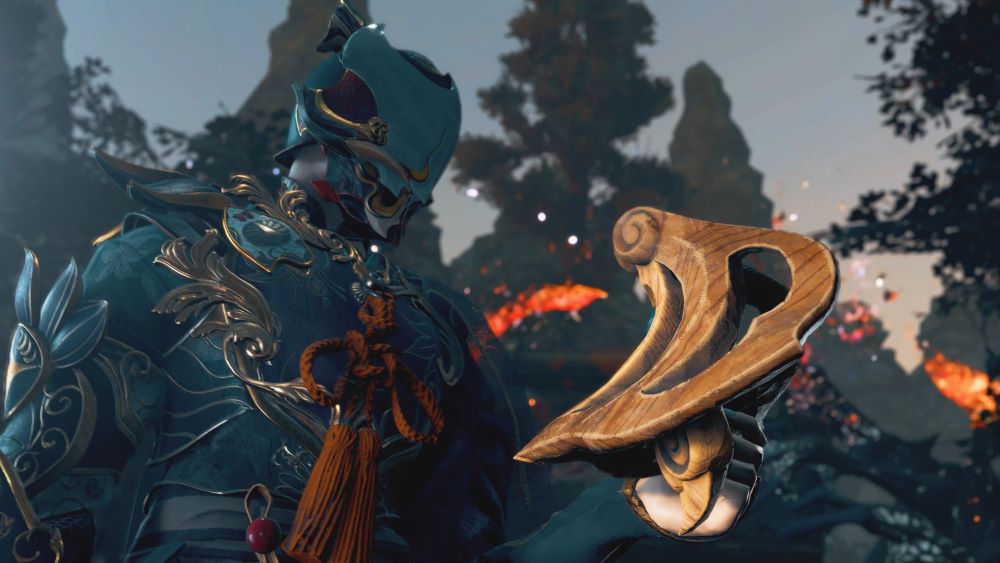
Patience is a Virtue
Kunitsu-Gami is a meaty title that gives you around 20 hours of gameplay before the end of the main campaign should you choose to mainline the game, but the replay value is increased by providing many optional challenges for each level that reward players with different bonuses upon completion. It is quite addictive and encourages you to come back to improve your score!
At the same time, this is also a genre that is not for everyone. A hybrid tower defense game is something that can be divisive, where you either like it or you don’t, and this fact alone can foster hesitation. Kunitsu-Gami may not be the game that changes your view of the genre, especially because of some difficulty spikes peppered throughout, but Capcom’s track record may be enough to instill confidence.
There’s so much to appreciate in both the aesthetic of Kunitsu-Gami, but also its traditional sound and music. The subtle movements of the characters are so inspired by Kabuki Theatre that there’s a beautiful dance that is exchanged between the characters with its presentation. The sword movements of Soh, the march of Yoshiro, and even the Villagers and their subtle actions really bring to life the world of Kunitsu-Gami, and its mix with an unusual genre makes everything more unexpected.
One thing worth pointing out is the simple storytelling of Kunitsu-Gami. It is as if the art and the simple narrative conspire to draw you into the game without too much exposition. If you wish to learn more, the codex is there to help you out. The dialogue is sparse, and the visual narrative keeps you engaged from the prologue to the final moments of the game.
Verdict: Buy It!

Kunitsu-Gami is more than just a visually appealing game; its unique gameplay style offers a dynamic action-strategy experience that is truly worth your time. The mechanics are intuitive and easy to implement, allowing you to focus on the overall strategy without overthinking. Its user-friendly customization is remarkable, enabling you to play at your own pace while consistently challenging you with its well-designed game mechanics.
The presentation of Kunitsu-Gami is exceptional. From the music and aesthetics to the simple yet engaging storytelling, the game’s world is beautifully crafted. You can take the time to appreciate its originality and cultural elements through its many extras. It is a fully realized world, with every element contributing to its charm, providing something to marvel at during your downtimes.
Capcom has a winner with Kunitsu-Gami, and it is definitely worth picking up, even for the simple fact that it launches at a lower price point than most titles. This game offers a substantial experience to explore, enjoy, and appreciate. For a new IP, it is a breath of fresh air, which is rare in an era dominated by sequels and remasters. Kunitsu-Gami is undoubtedly one of the great surprises of the year.
*Kunitsu-Gami: Path of the Goddess was reviewed on a PS5 and Steam Deck with a review code provided by the publisher.
Kunitsu-Gami: Path of the Goddess Review
Capcom has a hidden gem here with Kunitsu-Gami, as it gives a meaty title to explore and is surely a great surprise this year!
PROS
- Fun action-strategy game that naturally eases you into its gradually increasing difficulty.
- Presentation is top-notch with its attention to detail with its aesthetic, music, and visual storytelling.
- A fully realized battle system with its distinct gameplay phases
CONS
- Difficulty spikes can be somewhat abrupt at several points in the game.
- Some night phases feel too long once you're well acquainted with the gameplay loop
- Base building is limited to simply repairing structures

